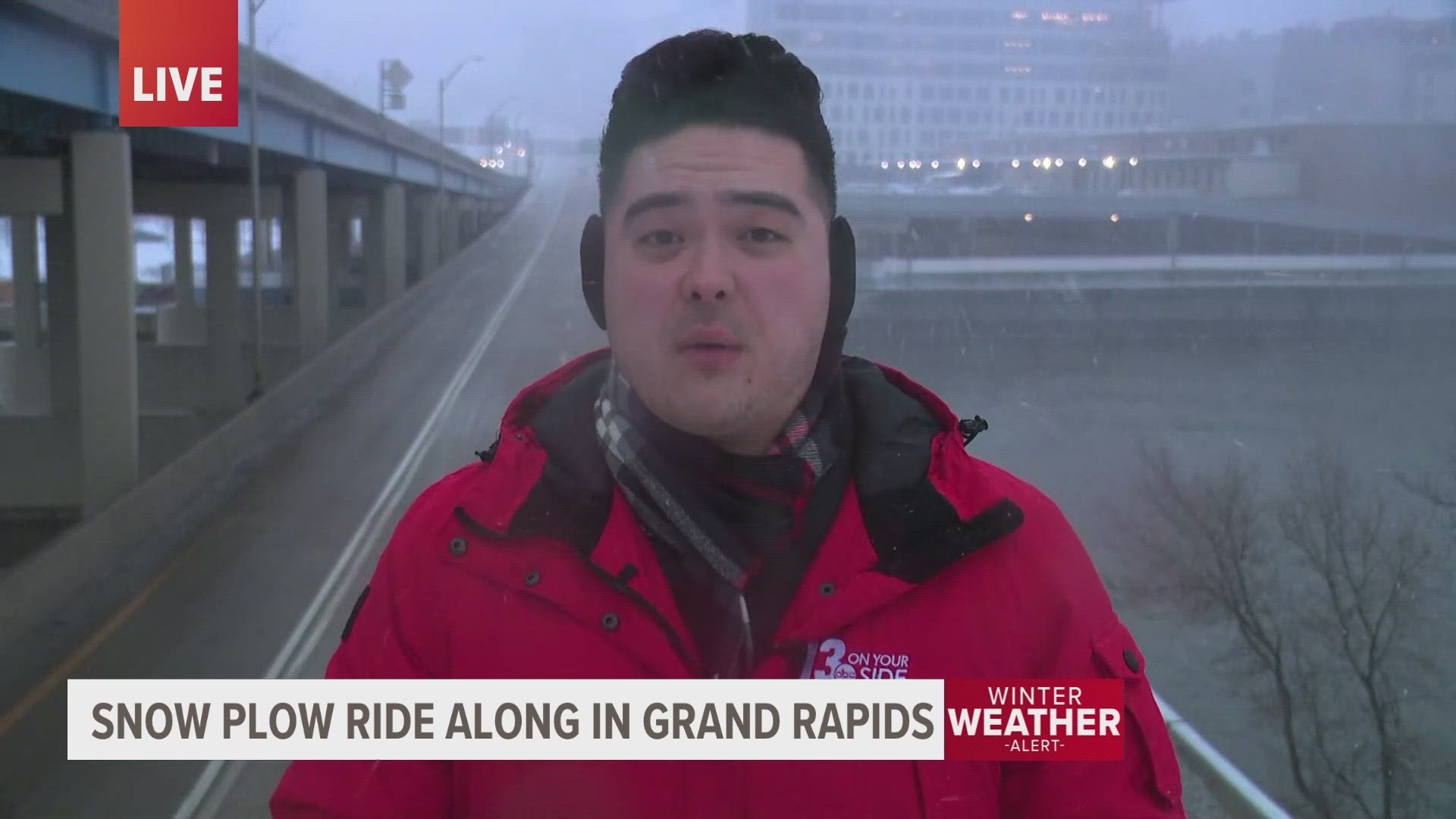GRAND RAPIDS, Mich. — Plow drivers and road commission workers across the region are hard at work attempting to keep up with this winter storm over the next 48 hours.
In Grand Rapids, crews' priority routes are high-traffic roads. Some examples of first attention streets include:
- Burton
- Division
- Fulton
- Leonard
- Monroe
When do plows go to secondary streets?
Depending on the weather conditions, crews will clear secondary streets and alleys when there are more than 3 inches of snow. De-icing salt typically is not applied to secondary streets.
Crews may salt streets with hills, severe curves or under special circumstances.
Extended snow events may require snow plow crews to leave secondary streets and return to first-attention roads to ensure safety on high-traffic streets. While the city makes every effort to clear bike lanes their main priority is to keep the automobile travel lanes clear of snow and ice.
If you don't absolutely have to be out on the roads Friday, road officials are asking people to just stay home.
West Michigan is facing blizzard-like conditions on the roads, as wind gusts over 40 mph and plenty of snow begins to accumulate.
Here are some tips to keep in mind if you do venture out when plow trucks are still clearing snow:
- DO NOT CROWD THE PLOW: MAINTAIN SAFE DISTANCE
Snowplows are large and operators cannot see directly behind the truck. - SLOW DOWN WHEN YOU SEE A SNOWPLOW
Snow plows travel at a slower speed; the most common crashes are motorists hitting the rear end of the plow. Stay alert and watch for a plow’s green and amber lights. - DO NOT PASS PLOW ON RIGHT
Plows push snow to the right shoulder, and many are equipped with a wing plow – a 6-8 foot extension on the right-hand side of the plow. This wing is difficult to see and can do harm to a passing car. - DO NOT PASS IN A SNOW CLOUD
Be sure the road ahead is clear of vehicles or snowdrifts before attempting to pass on the left. A snow cloud could be caused by crosswinds or by a snowplow, so be patient. - REMEMBER: PLOWS DO MORE THAN PLOW
Plow trucks also spread salt and deicing agents may spray your car. Maintain a safe distance between your car and the snowplow and be extremely cautious when passing on the left. Remember – do NOT pass a snowplow on the right.
You can learn more about the City of Grand Rapids' plan for clearing snow and plowing streets here.
When will Kent County plows get to my road?
Kent County Road Commission crews, equipment and materials are ready to respond to the snowstorm, as well as the downed trees and other debris that will likely accompany it. Pre-treatment on bridge deck and ramps will occur where conditions allow and safety-related efforts like guardrail repair and tree trimming continue this morning as time allows.
STORM RESPONSE: KCRC serves roads with high traffic volumes and speeds, first. Therefore, snow removal crews typically address roadways in the following order:
1. State Highways (ex: US-131, I-96, M-6)
2. County Primary Roads (ex: Byron Center Ave, West River Drive)
3. Local Paved Roads (ex: Buttrick Avenue, Courtland Drive)
4. County local unpaved (gravel) roads, lake drives, subdivision streets
If snow continues to fall, KCRC crews return to the state highways and primary roads before plowing local roads and streets. After state and county primary roads are passable, crews move on to clear local paved roads throughout the county.
EMERGENCIES: During winter storms, KCRC cannot respond to special requests for service.
- Anyone experiencing an emergency should contact 911. KCRC will respond as directed by law enforcement.
- Do NOT place emergency requests via KCRC's social media platforms or website - they will not receive an expedited response.
WIRES IN THE ROAD: If you experience a downed wire:
- Stay at least 25 feet away from it and call 911 and then Consumers Energy, 800-477-5050.
- KCRC cannot remove downed trees where downed wires are present.
In total, KCRC crews cover 5,300 lane miles, equivalent to a round trip between Kent County and California. Crews target one pass of a plow truck through the entire network within 36 hours of the storm’s conclusion.
STORM RESPONSE FAQs: Visit KCRC’s Winter Operations FAQ page.
►Make it easy to keep up to date with more stories like this. Download the 13 ON YOUR SIDE app now.
Have a news tip? Email news@13onyourside.com, visit our Facebook page or Twitter. Subscribe to our YouTube channel.
Watch 13 ON YOUR SIDE for free on Roku, Amazon Fire TV Stick, Apple TV and on your phone.

